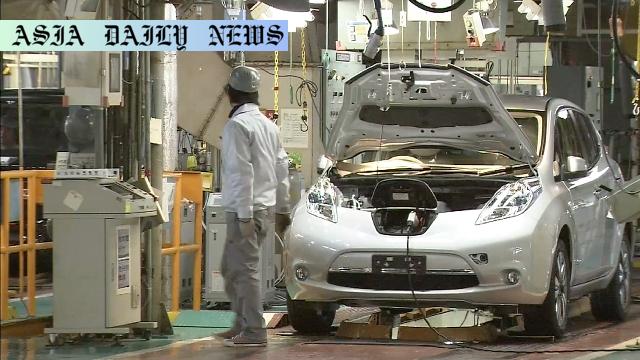Nissan plans to restructure its global production facilities, reducing workforce and possibly closing two plants in Japan.
- Nissan plans to cut 20,000 global jobs as part of restructuring.
- Two plants in Japan, Oppama and Shonan, face potential closure.
- Production has been low due to sluggish Nissan sales worldwide.
- Municipalities near the factories worry about economic impact.

Nissan’s Comprehensive Restructuring Efforts
Nissan Motor Co., a global automotive giant, has announced a significant restructuring effort aimed to overcome its persisting operational and financial challenges. As part of a massive overhaul, the company plans to cut approximately 20,000 jobs globally by fiscal 2027, consolidating its global production facilities from 17 down to 10. This decision reflects the automaker’s efforts to streamline operations and regain profitability amidst a challenging economic and market environment.
Japanese Plants Under Scrutiny: Impact on Kanagawa Prefecture
Among the proposed consolidations, two key plants in Japan—Oppama and Shonan—are under consideration for closure. Located in Kanagawa Prefecture, these facilities have been underutilized in recent years due to a decline in Nissan’s sales performance globally. The Oppama factory holds a yearly production capacity of 240,000 vehicles, while the Shonan plant, belonging to Nissan’s subsidiary Nissan Shatai, adds another 150,000 units yearly. Despite these capacities, production rates have dwindled, driven by the company’s struggles with competition and declining market share.
Global Downsizing Extends Beyond Japan
This restructuring initiative is not confined to Japan. As part of its strategy, Nissan has also considered exiting markets like Argentina and India, emphasizing a focus on prioritizing regions with higher profitability. There are notable talks regarding potential adjustments in Mexico, another key market for Nissan. These strategic closures and withdrawals speak to broader challenges the automaker faces, particularly sustaining profitability in a cutthroat global market.
Socio-Economic Consequences on Local Communities
The local economies in regions surrounding the Oppama and Shonan plants are bracing for significant socio-economic repercussions if these facilities close. Employment loss, reduction in associated local business revenues, and long-term economic stagnation are just a few of the concerns voiced by municipal authorities and residents. Nissan’s presence has been integral to the economy of these towns, and the closures may leave lasting scars on their financial landscape.
Labor Union and Stakeholder Engagement to Mitigate Impact
Nissan has emphasized its intention to work closely with labor unions, stakeholders, and other affected parties to ensure a smooth transition during these challenging times. Negotiations to determine the degree of impact and compensations, if closures are finalized, will likely hold substantial importance. Additionally, Nissan aims to adopt measures alleviating the employment impact, including potential redeployment of affected staff to other facilities.
Media Speculation and Nissan’s Response
Despite widespread media speculations suggesting drastic measures, Nissan has clarified that no official decisions have been disclosed concerning the closures. The company reiterated that it would carefully evaluate its restructuring plans, and updates would follow subsequent discussions with relevant stakeholders. Nonetheless, mounting pressures for efficiency reforms are likely steering Nissan towards implementing significant structural changes.
Navigating Challenges Towards a Resilient Future
Nissan’s bold restructuring reflects its determined commitment to reestablish a stronghold in the competitive automotive industry. While the road ahead involves significant disruptions to its workforce and manufacturing capabilities, the company aims to focus on sustainability and profitability. By consolidating production, managing resource allocation, and withdrawing from underperforming markets like Argentina and India, Nissan hopes to regain its competitive edge.



Commentary
Nissan’s Restructuring Decisions: Examining the Ripple Effect
Nissan’s decision to undergo an extensive restructuring plan is a strategic yet challenging move for the beleaguered automaker. By planning to consolidate its global operations and cutting its workforce, the company signals a clear intention to streamline costs and improve profitability. However, such decisions carry substantial ramifications—not just for the company, but for its employees and communities dependent on its operations.
Balancing Economic Necessity and Human Impact
The news of potential closures of the Oppama and Shonan plants showcases the precarious balance businesses like Nissan must maintain. While economic pressures necessitate responsive action, it is crucial for such decisions to consider the broader socio-economic implications. Workers losing jobs and local communities losing a significant economic driver often face long-term difficulties adjusting to similar shifts. The company’s promise to work closely with labor unions will be crucial in ensuring any transition minimizes losses wherever possible.
A Global Perspective on Consolidation Strategy
Nissan, by pulling out of non-strategic markets such as Argentina and India, underscores a growing trend in global business strategies: focusing resources on regions that promise higher growth or profitability. Exiting less-profitable markets, shutting down under-utilized plants, and consolidating operations are seen as necessary recalibrations for global firms under financial strain. However, these shifts often reshuffle economic burdens, creating vulnerabilities for communities left behind.
Looking Ahead: Is This Enough for Nissan’s Revival?
While the planned restructuring can potentially stabilize Nissan in the mid-to-long term, questions remain regarding its ability to regain a robust competitive position in the global market. Competitors are doubling down on electric vehicles and digital transformation, two aspects where Nissan must also focus heavily. Concurrently, ensuring that its restructuring delivers results without alienating existing workforce or markets will prove crucial for its turnaround narrative.
Conclusion
Nissan’s restructuring represents a bold and necessary recalibration for a company facing stagnation and dwindling global appeal. The automotive world will watch closely to see if this gamble pays off and whether the company manages to balance shareholder, employee, and community interests effectively. While the immediate path forward may appear uncertain, such decisive action is vital for long-term sustainability.